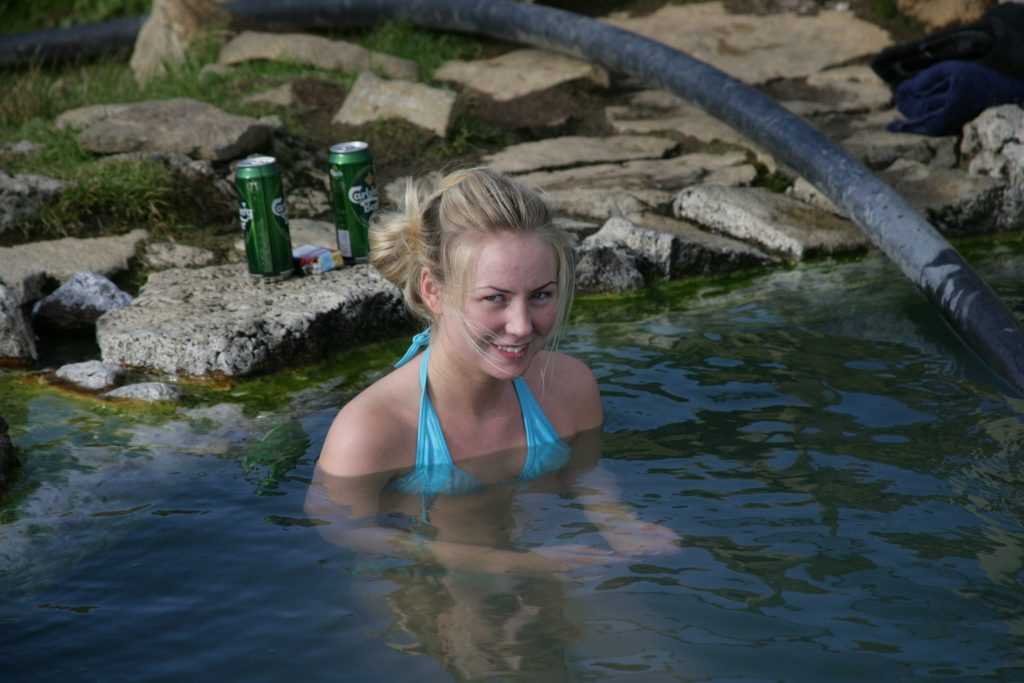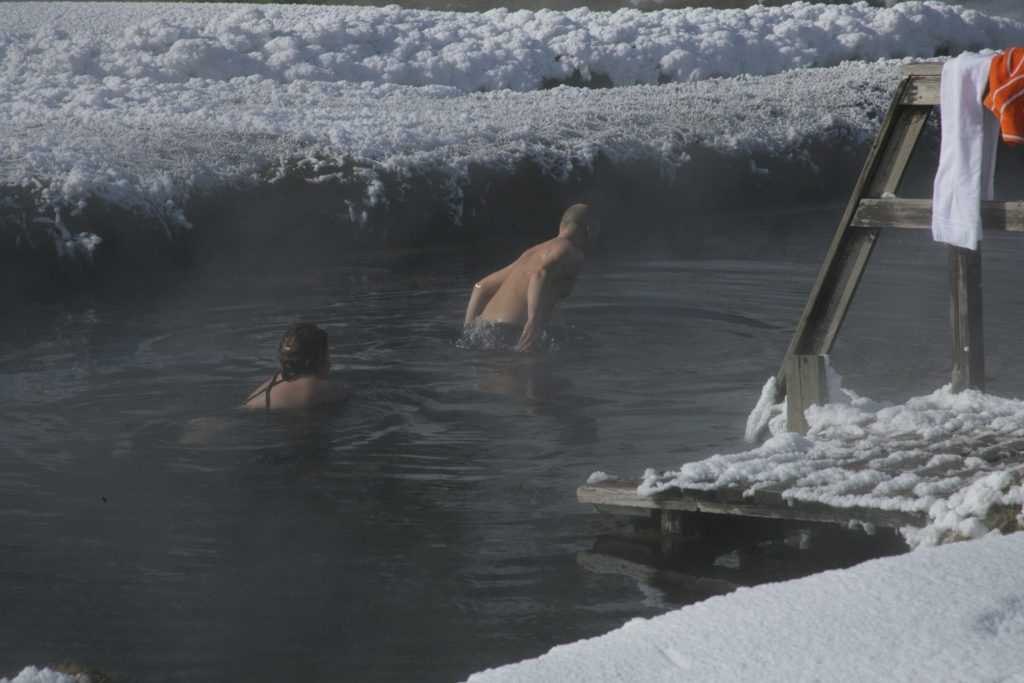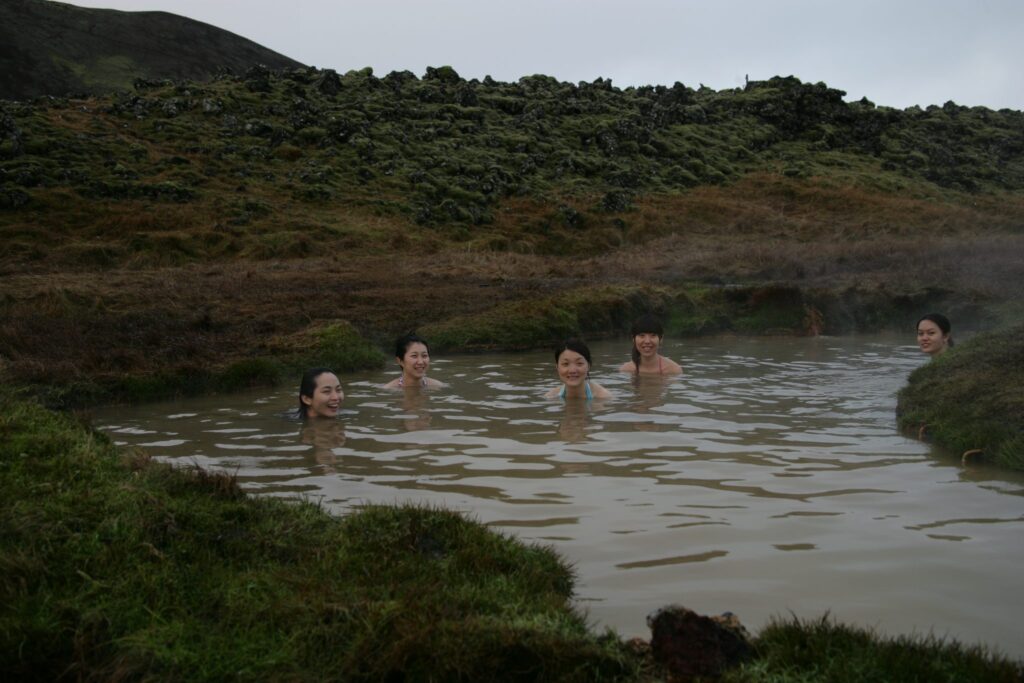From the Settlement to the Present, Hot Water has been a Natural Blessing
Extensive geothermal activity is one of Iceland’s most distinctive features, with more geothermal areas than any other country. It is known to be present at over 700 sites in Iceland.
For geothermal heat to reach the surface, precipitation must seep down into the ground to a level where it can be heated appreciably. The heated water must then find a crack or some other means of leaking to the surface again. In general, a certain amount of precipitation does manage to seep through the ground down into bedrock, where it is becomes steam through contact with magma.
Magma is molten rock that comes up from the earth in volcanic eruptions. In Iceland, an eruption has occurred approximately every forth year since long before Iceland was settled. There have been around 230 eruptions in the past 1100 years.
 Like ice on a lake, the earth’s crust floats on the earth’s mantle, and thus has some freedom to move under certain conditions. The force behind such movements is the heat created deep in the earth by the breakdown of radioactive materials. This heat has to be conducted from the earth’s core through the mantle and crust before reaching the surface. However, the rock in between is not a sufficiently good heat conductor to be able to bring up the heat that is continuously being created in the core. Convection currents have thus formed in the mantle to carry this heat upwards. These mantle currents are the cause, not only of crust movements and volcanism but also of geothermal activity, since the heat which they carry upwards from the core may warm up water on the way to the surface. The amount of heat thus dissipated is greatest at tectonic plate boundaries.
Like ice on a lake, the earth’s crust floats on the earth’s mantle, and thus has some freedom to move under certain conditions. The force behind such movements is the heat created deep in the earth by the breakdown of radioactive materials. This heat has to be conducted from the earth’s core through the mantle and crust before reaching the surface. However, the rock in between is not a sufficiently good heat conductor to be able to bring up the heat that is continuously being created in the core. Convection currents have thus formed in the mantle to carry this heat upwards. These mantle currents are the cause, not only of crust movements and volcanism but also of geothermal activity, since the heat which they carry upwards from the core may warm up water on the way to the surface. The amount of heat thus dissipated is greatest at tectonic plate boundaries.

One such boundary lies across Iceland and provides cracks for magma to move upwards, heating the nearby crust and, in some places, creating magma chambers. These magma chambers cause volcanic systems to form at the surface. In a geological sense, hot springs represent leakage from the flowing processes already described, with the leaks occurring because of faults in the bedrock. In fact, if it were not for bedrock fractures and other inconsistencies, geothermal water would not have an upward escape route from its underground system and would therefore end up flowing laterally until coming out in the sea. Over time, however, the bedrock becomes compressed, which slows the leakage and substances that are dissolved in the water precipitate from it, gradually clogging the openings, so that disturbances such as earthquakes are needed in order to maintain the geothermal flow to the surface.
The island’s geothermal activity caught the attention of the early settlers, as they referred to geothermal phenomena in their place names. Thus a great number of the original names include terms such as varm (warm), reyk (smoke/steam) or laug (pool). 
One of Iceland’s first internationally known geologists, Sigurdur Thorarinsson, estimated that around 55 saga place names were linked to geothermal activity. The first Icelandic building believed to have geothermal heating was a house in Mosfellsdalur, just north-west of Reykjavik in 1909. However, geothermal steam had been installed into a house at Sturlureykir a year earlier and was used for cooking. In 1928, drilling brought up about 15 liters of water per second at 94°C, enough to operate a geothermal heating utility in the growing city. In 1930, this utility served the national hospital, a school and about 650 homes. Today, Iceland uses more geothermal water for energy production than any other nation.

In several places in Iceland geothermal water collects naturally at comfortable temperatures for bathing. In other places, people have come to nature’s assistance to obtain the right temperatures and amount of water. Therefore, it is often difficult to distinguish which pools are natural and which are not. However, there are around 100 natural bathing places in Iceland.
Text and Photo: Björn Hróarsson



